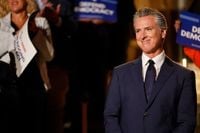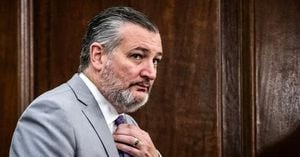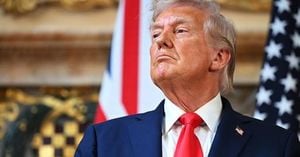California Governor Gavin Newsom has never been one to shy away from the political spotlight, but on Thursday, August 15, 2025, he made it clearer than ever that his ambitions stretch all the way to the White House. At a press conference flanked by local Democratic leaders, Newsom drew a sharp line in the sand, vowing to “match fire with fire” against Republicans and, notably, against some of his own party’s more cautious and aging leadership. According to The Independent, this was more than a local skirmish—it was Newsom’s first major chess move in the 2028 Democratic presidential primary race.
Newsom’s message was unmistakably bold. He called his political adversaries “cheaters” and “cowards,” a rhetorical shot across the bow that was as much aimed at his fellow Democrats as it was at Republicans. As reported by The Independent, Newsom’s aggressive tone is setting a new standard for the next generation of Democratic leaders, one that could sideline those who cling to bipartisanship or who are, in his view, simply too old to compete in the coming political battles.
But this isn’t just about tough talk. Newsom’s strategy centers on the hot-button issue of redistricting—a perennial flashpoint in American politics. With the 2025 midterm elections looming, Republicans in Texas have been pushing a mid-decade redistricting plan that could solidify their grip on swing districts. Newsom, in response, threatened to erase any gains made by Texas Republicans by moving to flip as many as nine congressional seats in California. He even unveiled a plan to circumvent his state’s independent redistricting commission, a move that, according to The Independent, was a direct challenge to the GOP’s maneuvers in Texas.
Yet, for all his bluster, Newsom is walking a careful line. While he pushes back hard against Texas’s redistricting moves, he’s stopped short of calling for the dismantling of California’s independent redistricting commission. This measured approach, as The Independent points out, allows him to present himself as both a fighter and a responsible steward of democratic norms—a tricky balancing act in today’s hyper-partisan climate.
Newsom’s boldness isn’t just making waves in California. According to John Shaw, director of the Paul Simon Public Policy Institute at Southern Illinois University, Newsom’s stance has likely forced other Democratic governors with national ambitions to at least talk about redistricting in their own states—even if, realistically, they don’t have the opportunity to make such changes. Shaw told The Independent, “If Newsom is saying, ‘I'm going to go in and change California's districts,’ you know, I think others who are on the White House track, including Governor Pritzker, felt maybe a reflexive need to say, ‘Well, yeah, we'll consider that in Illinois as well.’”
But the reality, as Shaw explained, is that the path to gerrymandering in many Democratic-led states is far from clear. In Illinois, for instance, Democrats hold only three Republican congressional districts, and there’s little feasible chance to redraw them out of GOP hands. Maryland, another state with a Democratic governor and a potential White House contender, could at most flip a single congressional seat—assuming the courts would even allow it. Newsom, then, is putting his peers in a tough spot, forcing them to respond to an issue where he holds a distinct advantage.
Newsom’s move has not gone unnoticed by political action groups. On Thursday, 314 Action—a group that backs candidates with STEM backgrounds—announced a $1 million investment in support of Newsom’s redistricting effort. Their plan? Target vulnerable GOP House members in five California districts, a clear signal that Newsom’s campaign is already attracting outside support and national attention.
The press conference itself wasn’t without drama. As if on cue, dozens of ICE agents arrived at the site, conducting what appeared to be an immigration enforcement raid. The disruption served as a stark reminder of the high-stakes, high-visibility environment in which Newsom now operates. According to The Independent, the scene could have been tailor-made for future campaign ads—a visual testament to Newsom’s willingness to confront controversy head-on.
Newsom’s national ambitions aren’t exactly a secret. Earlier this year, he was spotted in South Carolina alongside Congressman Jim Clyburn, a kingmaker whose endorsement famously revived Joe Biden’s 2020 presidential campaign. Clyburn, introducing Newsom to a group of voters, reportedly referred to him as one of “these candidates that are running for president,” according to Politico. While Clyburn’s own star may be fading within the party, his support in South Carolina remains a coveted prize for any Democratic hopeful.
The stakes in the redistricting battle are enormous. If Texas Republicans, feeling pressure from national party leaders worried about losing swing districts, back down from their redistricting plans, Newsom would score a rare, solo Democratic victory against the GOP in 2025. As The Economic Times reports, such a win would allow Newsom to claim credit as the Democrat who successfully pushed back, setting him apart from more passive party leaders. On the other hand, if Texas pushes forward and Newsom’s own efforts face legal or political obstacles, he could still emerge as the only Democratic governor who responded with a real plan, while others remained on the sidelines.
For Newsom, this is more than a policy fight—it’s a defining moment in his quest for the 2028 Democratic presidential nomination. By taking a strong, public stand on redistricting, he’s distinguishing himself from the party’s older, more cautious leadership, whose approval ratings among Democrats are, according to The Independent, in decline. In doing so, he’s not just shaping the contours of the redistricting debate; he may well be setting the terms of the 2028 primary itself.
Of course, politics is nothing if not unpredictable. The coming months will reveal whether Newsom’s gamble pays off—whether he can flip those nine California seats, whether Texas Republicans retreat, and whether his aggressive style resonates with Democratic voters hungry for a new generation of leadership. But one thing is certain: Gavin Newsom has fired the opening shot in what promises to be a bruising, high-stakes contest for the future of the Democratic Party—and perhaps the country itself.




